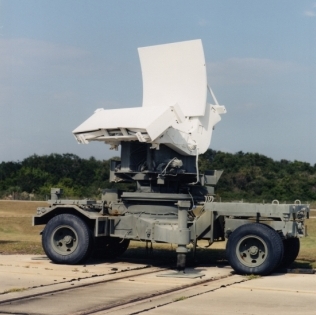
Photo Gallery
Overview
Display location:
History
The Atlas Radio Guidance System was used to control the initial flight path of an Atlas missile. The Atlas gave the U.S. its first Intercontinental Ballistic Missile (ICBM) capability, being declared operational in September 1959. Guidance systems similar to this were used in the control of the Atlas during the late 1950’s and early 1960’s.
This guidance system was made up of four distinct subsystems:
- The position measuring subsystem determined the location of the missile during flight.
- The velocity measuring subsystem calculated the speed and direction of the missile.
- The missile-borne subsystem provided a continuous data link between the missile and ground systems.
- The computer subsystem tied all the systems together.
A van contained all of the radio transmitting equipment necessary to send guidance commands to the Atlas during the early portion of its flight. An automated flight program was fed to the van from a guidance computer like the one on display in the Blockhouse.
Antennas
The two antennas located outside the van were used to determine the position and velocity of the missile. These data were fed to the guidance computer, which measured any deviations in the flight path and calculated any course corrections needed. Course corrections were transmitted by radio to the missile.
The dish antenna is the Atlas Position Measuring Antenna, and was used to measure the velocity of the missile. Its 6-foot diameter dish and other hardware were manufactured by General Electric. The entire unit weighs more than 3,700 pounds and is about 14 feet long, 6 feet wide and 9 feet tall.
The other antenna is the Mod I radar. It weighs 20,000 pounds and was used to provide position data on the Atlas during its flight.
Related Pages:
- Atlas F and Transporter
- Atlas Vernier Engine
- Atlas Booster Engine
- Atlas Archived Photography
- Burroughs MOD I Guidance Computer
- CCSFS Guided Missile Control Facility No. 1


